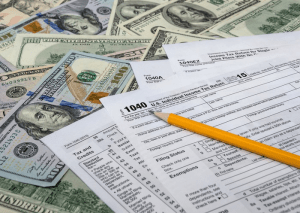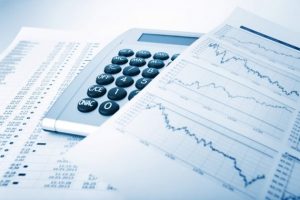Current Assets Know the Financial Ratios That Use Current Assets

Merchandise payable is also separately identified under the current liabilities section of Macy’s balance sheet– $2.053 billion in 2023 and $2.222 billion in 2022. However, it still does not meet the gold standard 1.0 quick ratio or 1.5 current ratio. It is the sum of all cash accounts that appear on a company’s general ledger. It includes money that is present in a company’s bank account or petty cash drawer as of the date of the financial statements.
You should also use Current Assets to calculate various ratios that can yield insights into the operating performance. Here are some formulas that will help you when dealing with Short-Term Assets. The company might sometimes provide some small loans to another company or the company under the same group. The raw material is what the company purchases from its suppliers. Work in progress is the kind of in-progress goods, and the cost normally combines the raw material, labor, and other direct overhead.
- It is important to note that the items forming a part of inventory are the goods that would be sold in the normal course of business.
- Companies that don’t have enough liquidity may struggle with a cash flow crunch or lose out on opportunities to expand.
- The value of these items are summed up and listed on the balance sheet under the inventory category.
- These instruments are highly liquid, secure and can be easily converted into cash usually within 90 days.
For instance, liquor companies treat their inventories as current assets. This is despite the fact that such inventories remain a part of the aging process for more than two years. “For example, it’s not a good situation if sales are slowing over time if inventories (a current asset) are rising.” For example, a company that builds manufacturing equipment might consider the completed units as inventory and classify them as current assets. However, a company that buys the machinery and will use it for years to come would consider it a fixed asset.
What are the Current Assets?
Whereas, goods available as raw materials, work-in-process and finished goods form a part of inventory in case of manufacturing firms. Marketable securities include assets such as stocks, Treasuries, commercial paper, exchange traded funds (ETFs), and other money market instruments. Many companies categorize liquid investments into the Marketable retained earnings equation Securities account, but some can be accounted for in the Other Short-Term Investments account. An example would be excess funds invested in a short-term security, putting the funds to work but keeping the option of accessing them if needed. This can help a company improve its financial health and avoid defaulting on its loans.
- A company’s current liabilities are obligations that are due within one year.
- Assets whose value is recorded in the Current Assets account are considered current assets.
- Here are the seven main types of current assets, listed in order of liquidity (which is how they should be listed on a balance sheet).
- Generally speaking, most companies have an operating cycle shorter than a year.
Accounts receivables are the amounts that a company’s customers owe to it for the goods and services supplied by the company on credit. The accounts receivables are presented in the balance sheet at net realizable value. These amounts are determined after considering the bad debt expense. Current assets are all assets that a company expects to convert to cash within one year. A company’s assets on its balance sheet are split into two categories – current and non-current (long-term or capital assets).
Russia is resorting to desperate measures to recruit soldiers
For example, a service-based industry like management consulting will not have any inventory as they don’t offer any products. By calculating the current assets, we can calculate important liquidity ratios such as the current ratio which we’ll look at later. In accounting, a company’s current assets include the cash it has on hand and the other assets that will soon be turned into cash.
“Both current assets and current liabilities are found every quarter on a company’s balance sheet statement,” says Stucky. Current assets are assets that can be converted into cash within one fiscal year or one operating cycle. Current assets are used to facilitate day-to-day operational expenses and investments. As a result, short-term assets are liquid, meaning they can be readily converted into cash. Creditors and investors keep a close eye on the Current Assets account to assess whether a business is capable of paying its obligations.
Current (Short-term) vs. Non-Current (Long-term Assets)
He currently researches and teaches economic sociology and the social studies of finance at the Hebrew University in Jerusalem. AGG remains inside this area of consolidation going back to May 2022. Chart 2 shows that SPY gained 3.27% in July which is another nice gain. SPY had a bullish candle, remains in bullish alignment, and has risen for five consecutive months.
When the working capital is managed well, it can help the business increase its profits, value appreciation, and liquidity. Managing working capital is vital for business growth and helps avoid cash flow problems. When items have a history of being sold to consumers quickly, they are also referred to as fast-moving consumer goods (FMCGs). Therefore, various inventory costing methods have to used once the unit cost of inventory is determined. These methods are used to bring a systematic approach in determining the cost of inventory. Get instant access to video lessons taught by experienced investment bankers.
How Current Assets Information is Used
The balance sheet shows a company’s assets, liabilities, and equity at a certain point in time. It is a snapshot of a company’s financial position as of the date of the financial statements. Because current assets are the most liquid type of asset, they are the first asset category listed on a company’s balance sheet. Current assets will usually have a subtotal on the balance sheet as well, for easy identification. Current assets and liquidity are important financial measures for a business because they allow a company to pay off its current debt obligations.
The total current assets figure is of prime importance to company management regarding the daily operations of a business. As payments toward bills and loans become due, management must have the necessary cash. The dollar value represented by the total current assets figure reflects the company’s cash and liquidity position. It allows management to reallocate and liquidate assets—if necessary—to continue business operations. Current assets are an important part of a company’s financial health.

It provides an overview of the company’s assets, liabilities, and equity. The balance sheet can assess a company’s financial health and calculate important ratios such as the current ratio. In financial statements, these groups of current assets are recorded in the balance sheet and show the value at the end of the reporting date.
Now that we know what current assets are, let’s explore some of the different types in more detail. The ratio is below both moving averages and those moving averages are turning lower. This says that EFA is an inferior investment to VXF at this time. It would be a clear breach of international law to seize Russian assets unilaterally.
Denny’s Corporation Reports Results For Second Quarter – GlobeNewswire
Denny’s Corporation Reports Results For Second Quarter.
Posted: Tue, 01 Aug 2023 20:05:00 GMT [source]
These multiple measures assess the company’s ability to pay outstanding debts and cover liabilities and expenses without liquidating its fixed assets. Creditors are interested in the proportion of current assets to current liabilities, since it indicates the short-term liquidity of an entity. In essence, having substantially more current assets than liabilities indicates that a business should be able to meet its short-term obligations. This type of liquidity-related analysis can involve the use of several ratios, include the cash ratio, current ratio, and quick ratio.
Inventory:
Staff might need some money to pay for their accommodation, traveling, and food. The entity’s policy might allow staff to advance some amount of money equivalence to their estimated expenses for the mission. In the meantime, start building your store with a free 3-day trial of Shopify. We follow strict ethical journalism practices, which includes presenting unbiased information and citing reliable, attributed resources. Below is a consolidated balance sheet of Nike, Inc for the period ending May 31, 2022.
Furthermore, these securities include treasury bills, commercial paper and money market funds. Also, these securities readily trade in the market and the value of such securities can also be readily determined. Thus, cash appears as first item under the account head “current assets” in the balance sheet as it is the most liquid asset of the entity. This is because all the items in the current assets account category are listed in the order of liquidity of the assets. Companies that don’t have enough liquidity may struggle with a cash flow crunch or lose out on opportunities to expand. Reviewing a company’s current assets, liabilities, and related financial ratios can give you insight into whether a company may fail, survive, or thrive.
